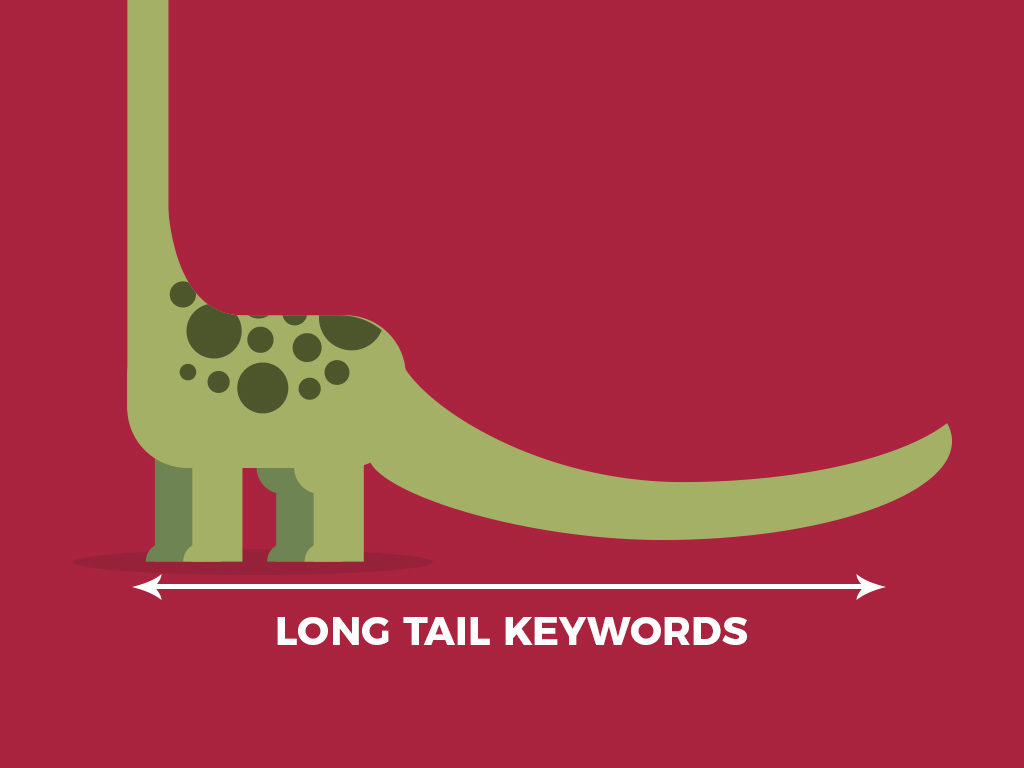TUTORIAL: Why You Should Target Long-Tail Keywords
Having a long-tail keyword strategy has always been an undertaking that numerous SEOs try to avoid. Most of them think that it is too time-consuming hence a waste of time; it also uses up a lot of their hard-earned money. It’s perfectly understandable because it is known that long-tail keywords have low search volume, and it is not just worth the effort.
That is why they often opt to rank for popular keywords, but it often ends in failure. The competition for these kinds of keywords is huge, and if you do not put it the extra effort into your strategy, you will just end up wasting a lot of your time and effort.
Here’s an advice to help you: if you do not have a long-tail SEO strategy, you are wasting a precious opportunity that could have otherwise helped you rank higher. Researching long-tail keywords, targeting low-competition keywords that have high conversion rates, and to use these keywords to improve your content’s performance has never been easier as it is now. I’ll be showing you how to do exactly this.
Long-Tail Keywords
These types of keywords are immensely targeted search phrases that specifically fulfill the searcher’s intent. Long-tail keywords typically have low search volume, high conversion rates, and low competition.
They are called “long-tail” because when plotted in a graph of keywords and search volume, they would be on the “long tail” or nearing the end of the search demand curve. This means that they are the keywords that only a few people are searching for them on a monthly basis.
Despite having low search volume, long-tail keywords are definitely easier to rank for and they have a higher chance to convert users into customers than the high-ranking keywords. It is because long-tail keywords possess a specific and clear need that only you and a few number of people can solve. They are basically driven by the intent of the users.
Additionally, when you have completely understood the search intent of your target audience, you can then create content that specifically tackles queries and eventually converts.
Here’s an example: A few users are searching for “Samsung Galaxy J7 Pro price” – which indicates a very specific intent to purchase. When compared to a search query for “Samsung price”, then the second query is much less clear – which could lead to numerous interpretations such as they might be looking for Samsung phones in general, or an update about the prices of Samsung phones; not about specifically buying a phone.
Keep in mind that the length of long-tail keywords varies from time to time. Some of them are more than three words because of the specificity of the search query while other have less than three words such as brand name searches. All of these can be considered as long-tail keywords.
Why They are Important for SEO
A commonly known fact is that almost 70% of search traffic comes from long-tail keywords, and many of these keywords are business specific. You could only imagine how successful you will be if all of these immensely targeted queries bring about leads directly to your high-converting pages.
Essentially, there are three primary benefits of targeting long-tail keywords:
- Fewer Competition
Since these keywords are specific to a certain business or field, the competition will only be between you and few others that share your niche. One of the best things of targeting long-tail keywords is that they do not need as much effort to rank well when compared to the high-ranking keywords. A great link building strategy or a perfect meta description for your landing pages could result to a higher ranking and conversion rate if your targeted keywords are sufficiently specific.
- More Conversions
The simple act of researching long-tail keywords will definitely help you in discovering search intent. If found, you will be able to ascertain queries that indicate an intent to buy and the need for additional information. When you have found all of these, you can already direct qualified leads into your sales process, and to also improve your content marketing efforts and conversion rate optimization.
- Use it to Optimize for Semantic Search
It has been known that long-tail keywords are essential when you want to optimize for semantic search. Since today is a time of technological advancements, the use of voice search and talking to bots are commonplace. Whenever a user performs queries through these platforms, more often than not, they use long-tail keyword phrases such as questions and commands with specific intent.
Make a habit of predicting what the user’s intent behind the questions, and provide answers about your business or services to improve your efforts in targeting long-tail keyword phrases.
Take note that targeting top converting long-tail keywords even if they have low search density can still be immensely valuable for your business.
Looking For Long-Tail Keywords
Ranking for the correct long-tail keyword could lead to a successful business venture, and discovering new long-tail keywords is as easy as it sounds. You can create a list with considerable length in a matter of minutes. Here’s how:
- Compile the long-tail keywords that you know you rank for.
- Open your preferred keyword research tool.
- Go to Search Traffic.
- Then Search Analytics.
- Select Clicks, Impressions, and Position.
- Lastly, click Download to obtain the complete list.
Next, download the same information about your PPC campaign, FB page, Twitter, Youtube videos, Instagram, and any other metric that you think of that possibly give you new terms. To have a single place to put them in, input them into a single spreadsheet.
You could also try to find new long-tail keywords that are related to you that you know that you could rank for. Here’s how to create a list manually:
- Obtain a list of seed keywords. You could use your preferred keyword planning tool to search for a list of seed keywords. I recommend that you veer away from Google AdWords. This tool is great if you are looking for a list of commercial terms, but it purposely ignored long-tail terms with lower search volume.
- Use Google’s autocomplete suggestion feature. Input each and every seed keyword that you obtained into the Google search bar and list down its autocomplete suggestions.
- List down the related search suggestions. Go to the bottom of each SERP (Search Engine Results Page) to see the related search suggestions.
- Do the same for other search engines that you want to optimize for.
- Add the potential long-tail terms to your spreadsheet.
It might sound difficult, but in today’s software advancements, it will actually be very easy. If you are using the best programs, you can even filter through multiple search engines in a few clicks, and they may even discover long-tail keywords that you have overlooked.
Now that you have a complete list of your potential keywords, filter through it and remove those that do not specifically represent user intent. When you are done, you will be ready to proceed to optimize your pages and add them to your content.
Building Content Around Long-Tail Keywords
What you need to do now is to count how many long-tail keywords you have, and how they are related to each other. Historically, you should make pages for each long-tail. If you can, then that would be good. However, doing this is not always possible.
Whenever you have compiled hundreds of long-tails that you can target, you will be needing content other than landing pages. Here’s what you need to do:
Separate your long-tail keywords by search intent, and compile them accordingly. For example, you have the terms “Casio watches Lazada” and “Casio watches Zalora”, then the intent of these keywords is “places to buy Casio watches”. It’s that easy.
Basically, what you will be doing is organizing your long-tail keywords by topic – which will lead to you finding the most natural group for them to be in. If you already have content that answers the intent that you discover, then you could just insert these keywords into your page. On the other hand, if you do not have any content for them, then you already have an idea for your next piece of content.
Of course, when you are already in the publishing phase of the content, then make sure that you have the perfect meta description and title tag because they will be the ones that will, essentially, be introducing your content to users.
Key Takeaway
Now that you know why you should use a long-tail keyword SEO strategy, use what you learned here to your advantage. However, always remember that your long-tail keyword strategy relies heavily on the content you generate.
If you are not that well known in the industry, start by generating high-value assets, creating content about the industry, and it could also help you if you revise your web copies to impart you UVP (unique value proposition) to your visitors/customers.
Take note that it is also important for you to measure your rankings and traffic while putting out content for your new long-tail keywords. When you do, you might even discover more keyword phrases that you can target, and it will help you to continuously build up your reputation and enhance your on-page SEO.
What are your thoughts on using a long-tail keyword SEO strategy? Let’s talk in the comments section below.




